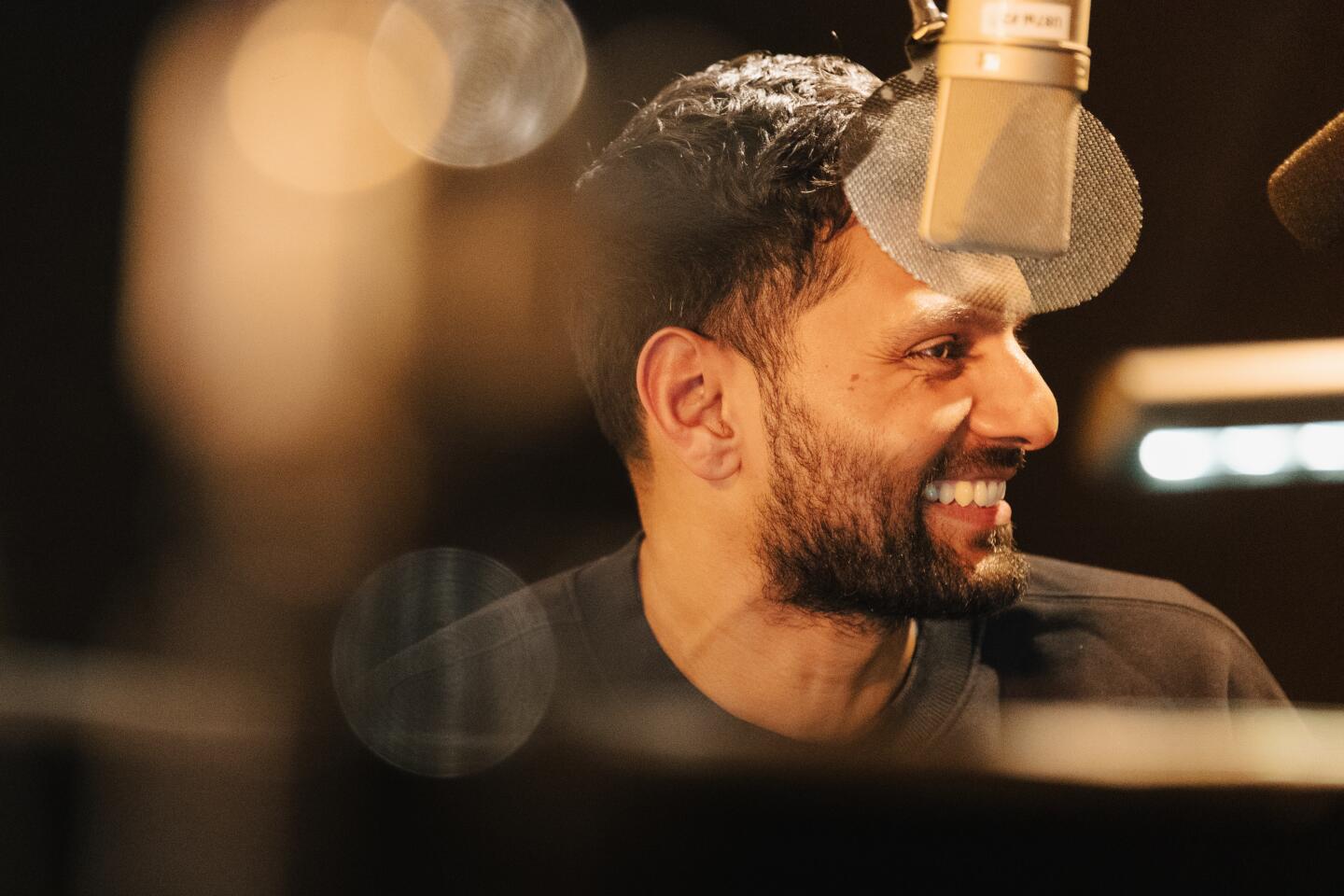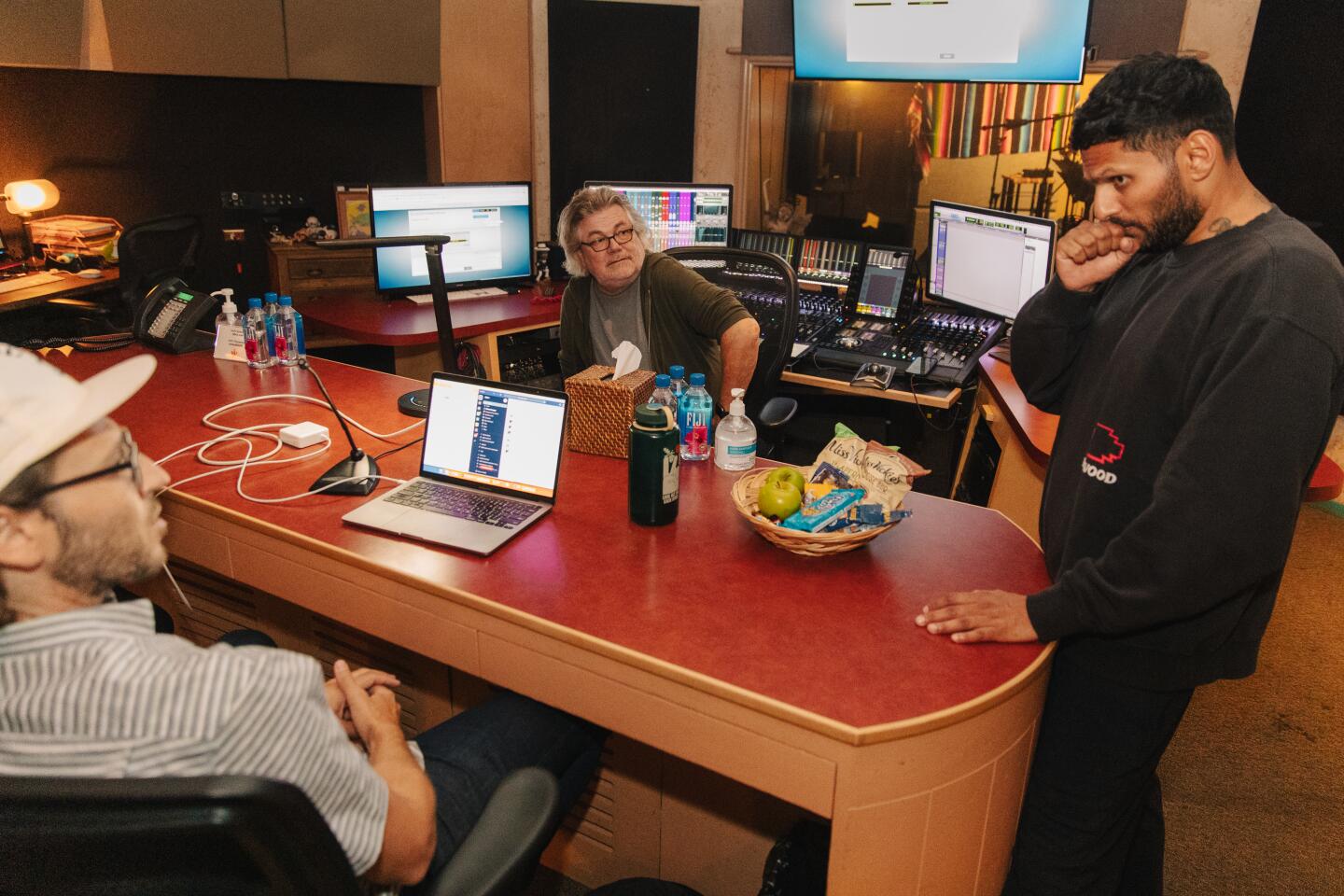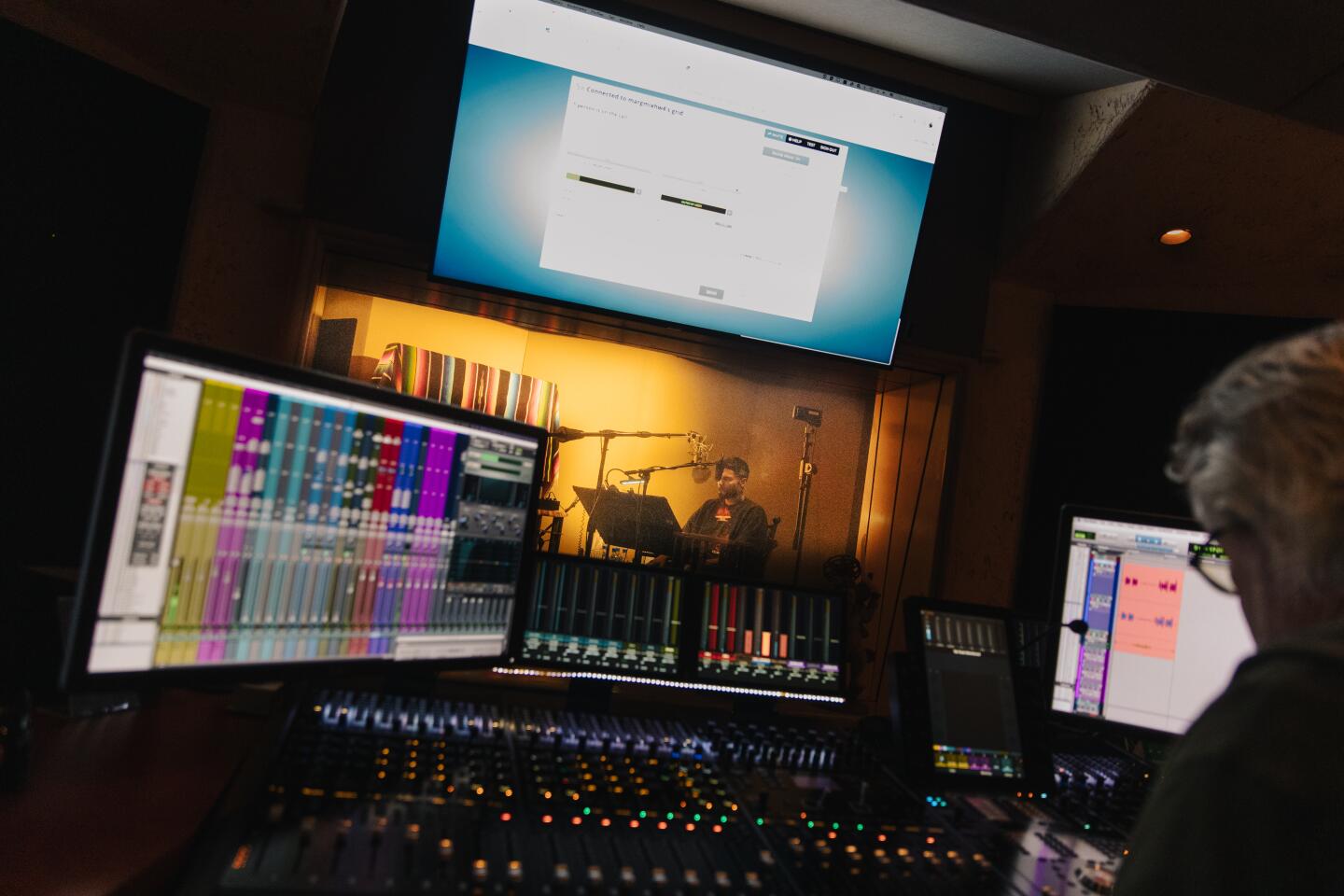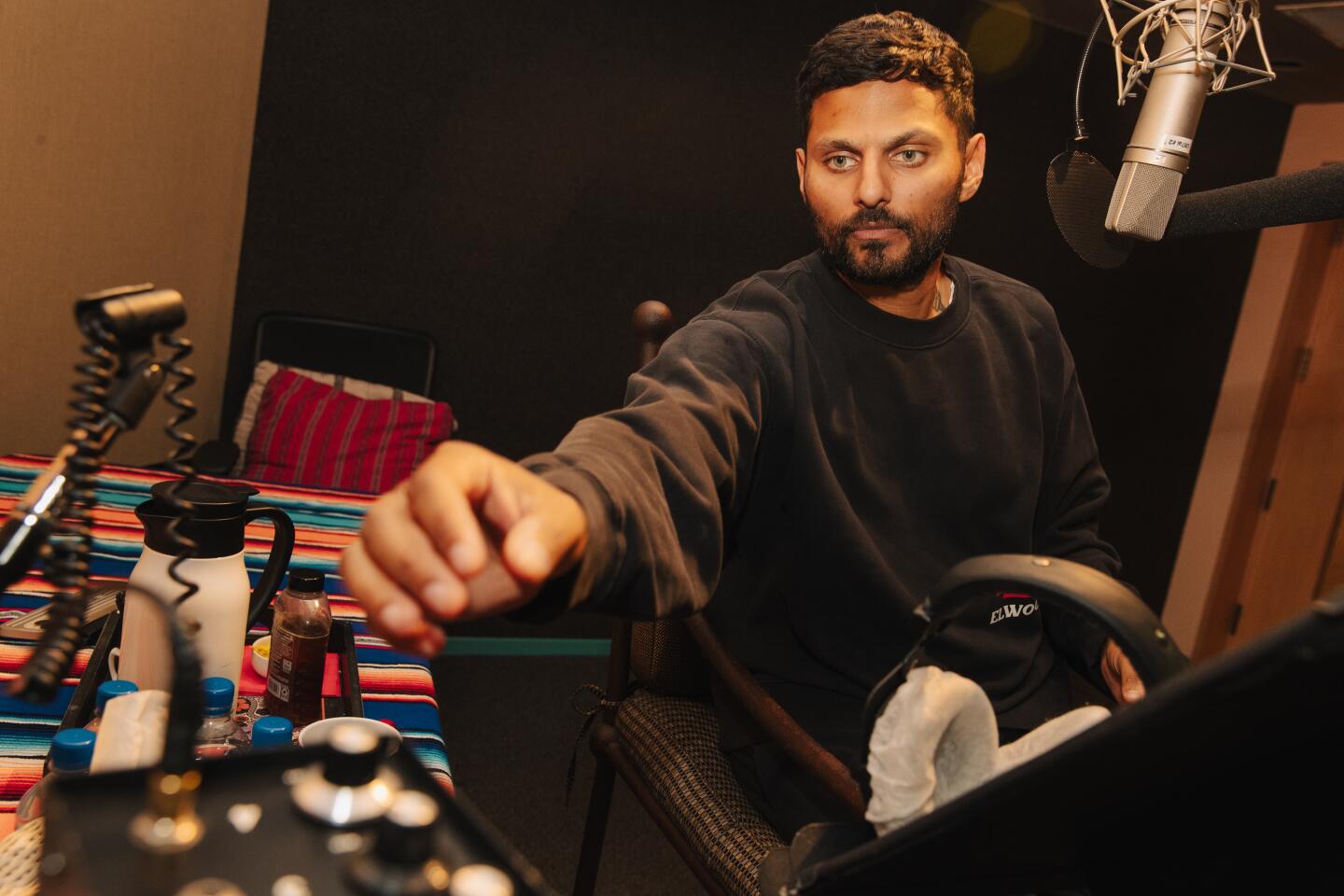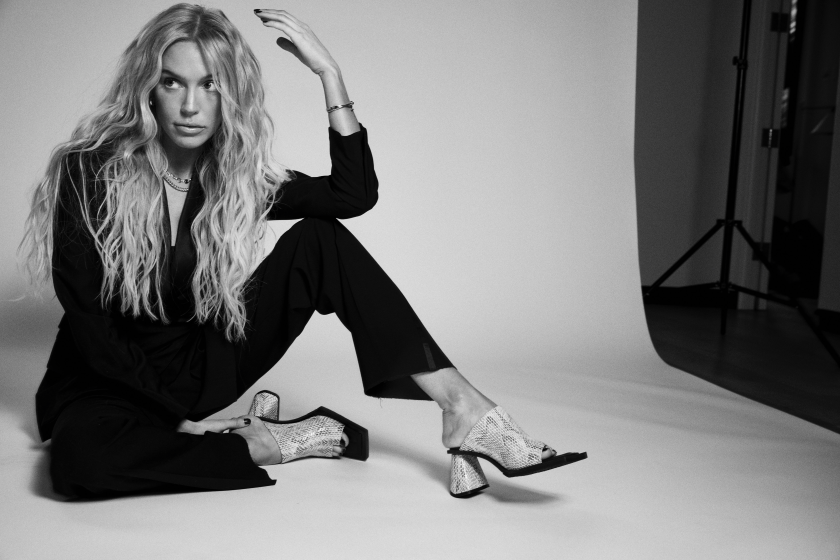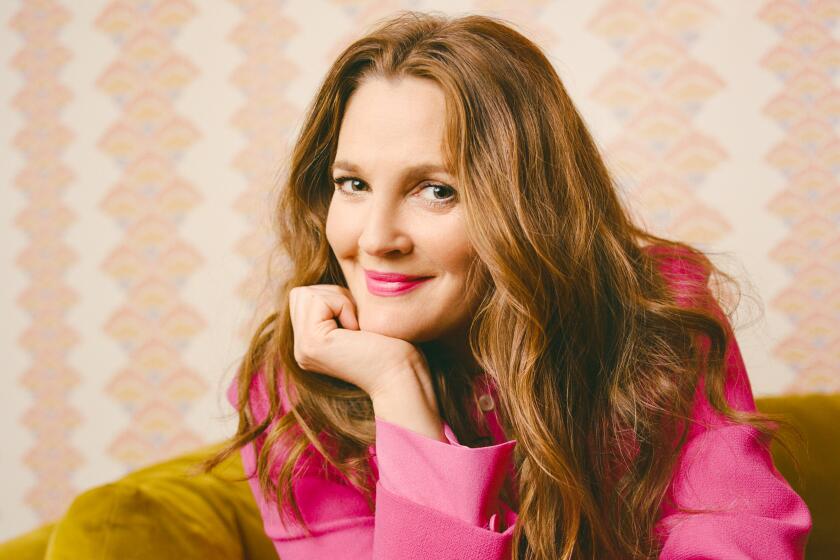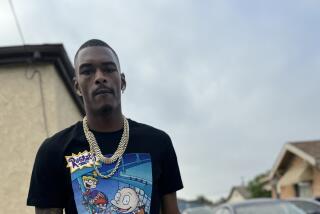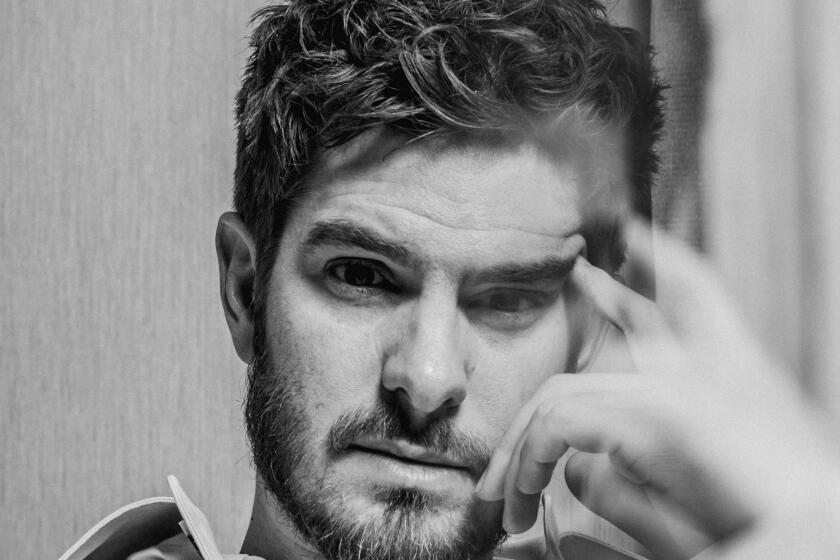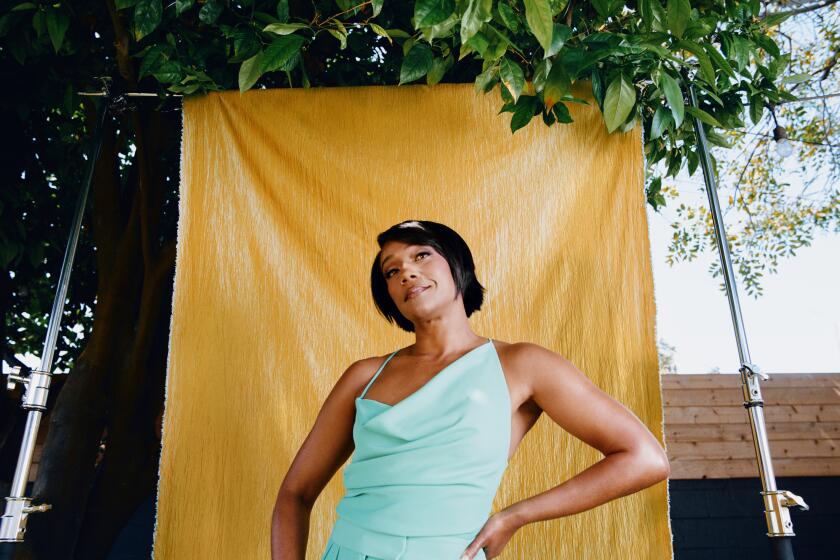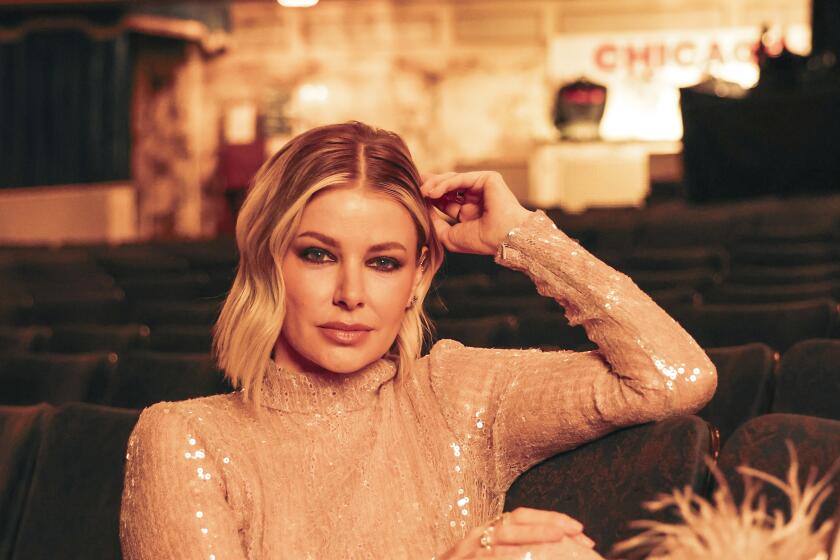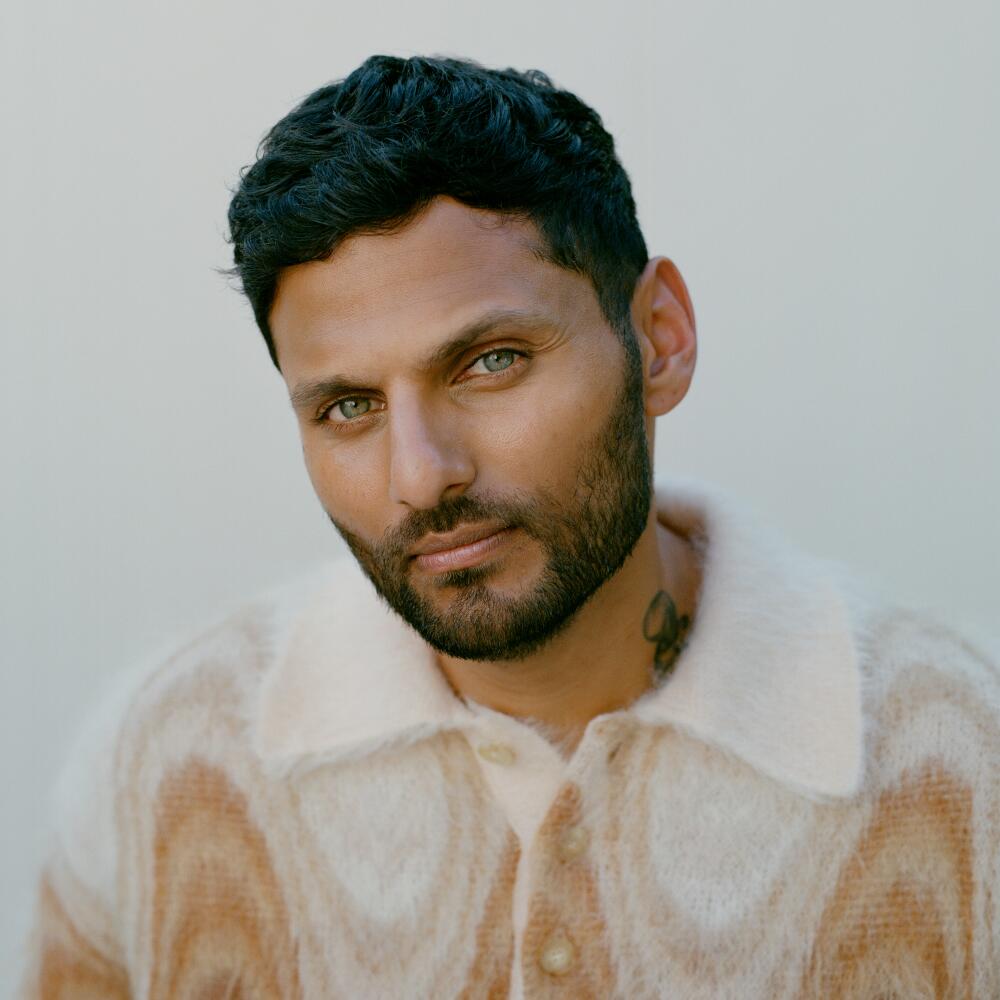
To listen to this profile, press the play button below:
I’m not good at sleeping. Scratch that: I am good at sleeping, just not at the times when I’m supposed to. I love the night. I’m galvanized by the moon shining in through my window, sitting at a desk in the glow of candlelight, the breeze rustling the leaves outside.
Closing my eyes before midnight is anathema to me. And still, I try. Because being a night owl in a city full of Runyon Canyon-climbing, Erewhon-shopping early birds is untenable — at least if I want to maintain my relationship, job or any semblance of a social life.
So I listen to things, podcasts or relaxing soundscapes, to try to distract from my own careening thoughts. Recently, when nothing was lulling me to slumber, I finally surrendered to the siren call of celebrity spiritual sage Jay Shetty.
Who are the people shaping our culture? In her column, Amy Kaufman examines the lives of icons, underdogs and rising stars to find out — “For Real.”
Shetty, 35, is a former monk who, since moving to Hollywood five years ago, has become the town’s go-to life coach. With penetrating blue-green eyes, high-end athleisure uniform and a belief that the key to happiness is uncovering the purpose that drives you, Shetty has generated a level of support that is remarkable even in an industry that has a long history of propping up self-help leaders.
Jennifer Lopez and Ben Affleck selected him to officiate their wedding last September, a year after he did the same for Lily Collins and her partner, Charlie McDowell. He’s been Will Smith’s private coach, spending between two and eight hours a day with him in 2021 — pre-Oscars fiasco — studying the Bhagavad Gita. During the pandemic, Joe Jonas asked Shetty to lead a weekly meditation session for the singer and his friends — a Zoom gathering that went on for 75 sessions.
Following a surprise wedding in Las Vegas, Ben Affleck and Jennifer Lopez tied the knot again this weekend at a more formal ceremony in Georgia.
Shetty’s podcast, “On Purpose,” which distributor iHeartMedia says gets more than 35 million monthly downloads, has become a popular destination for industry elite. Kim Kardashian, Ari Emanuel and Lewis Hamilton have been guests this year, and in July, “Spider-Man” star Tom Holland chose to reveal on the show that he’d quit drinking after developing an alcohol addiction.
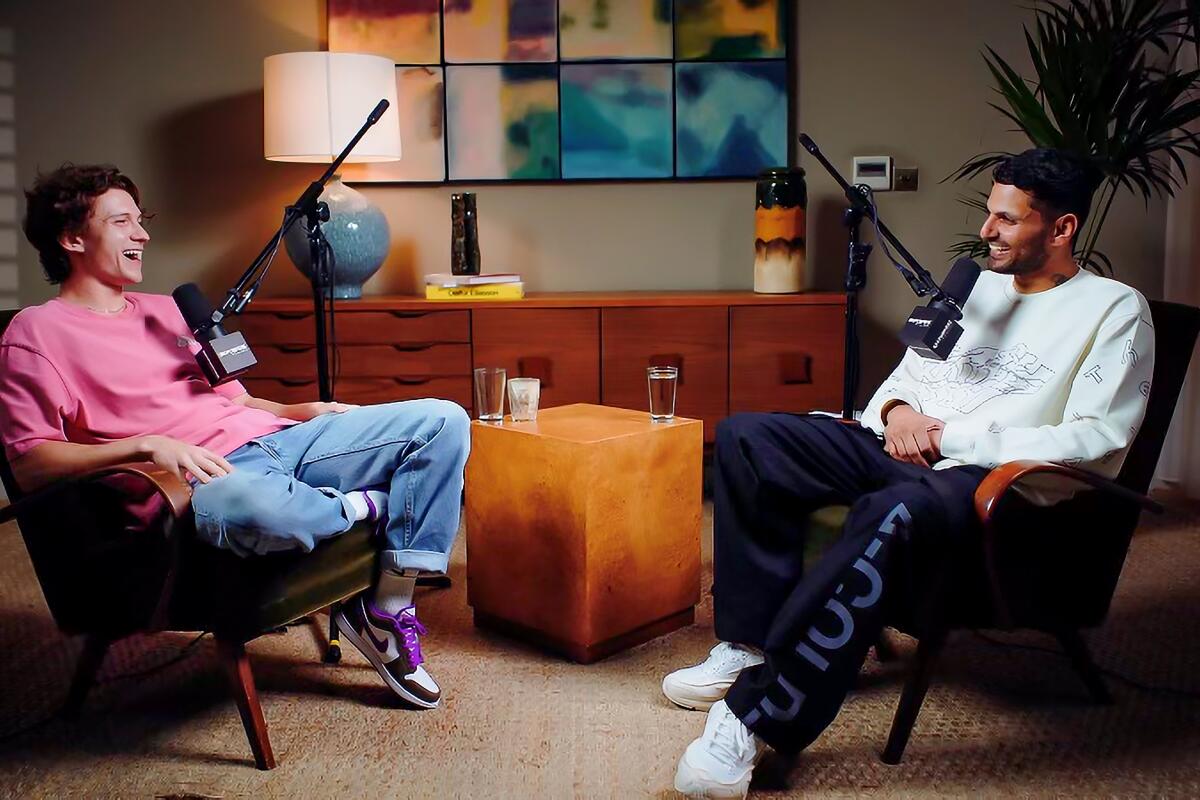
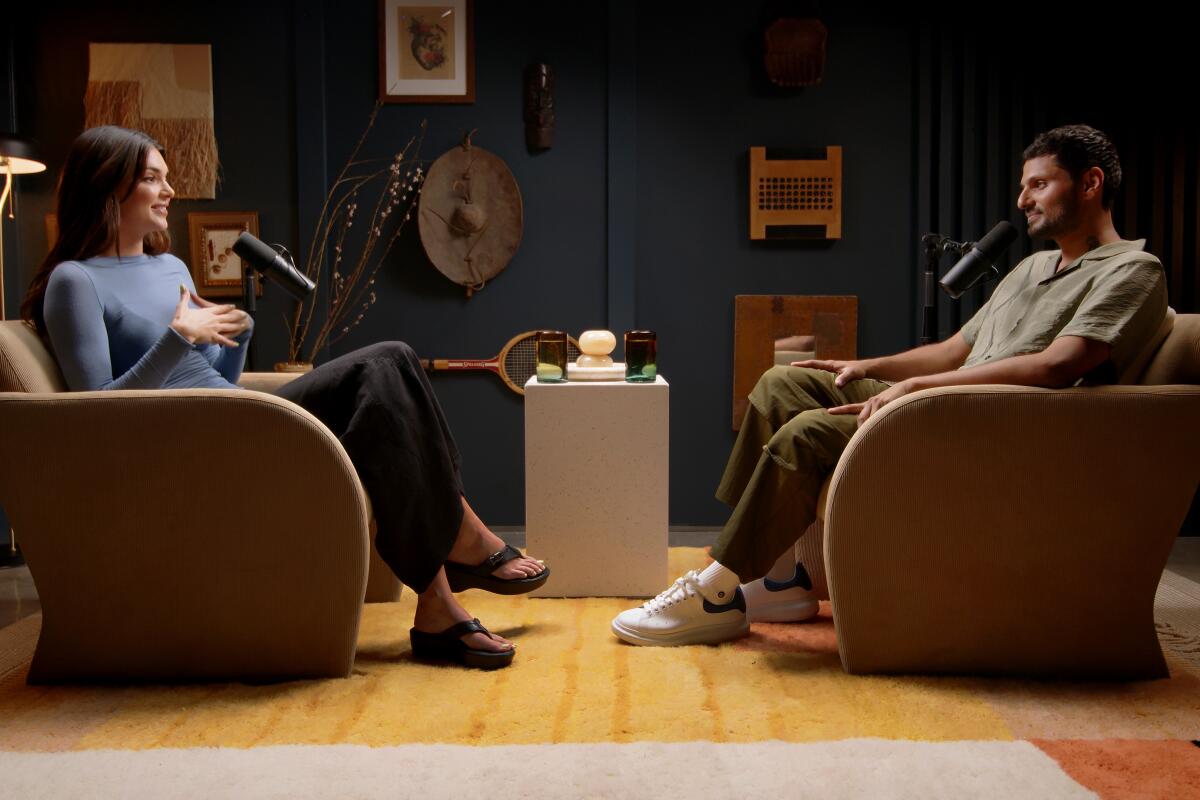
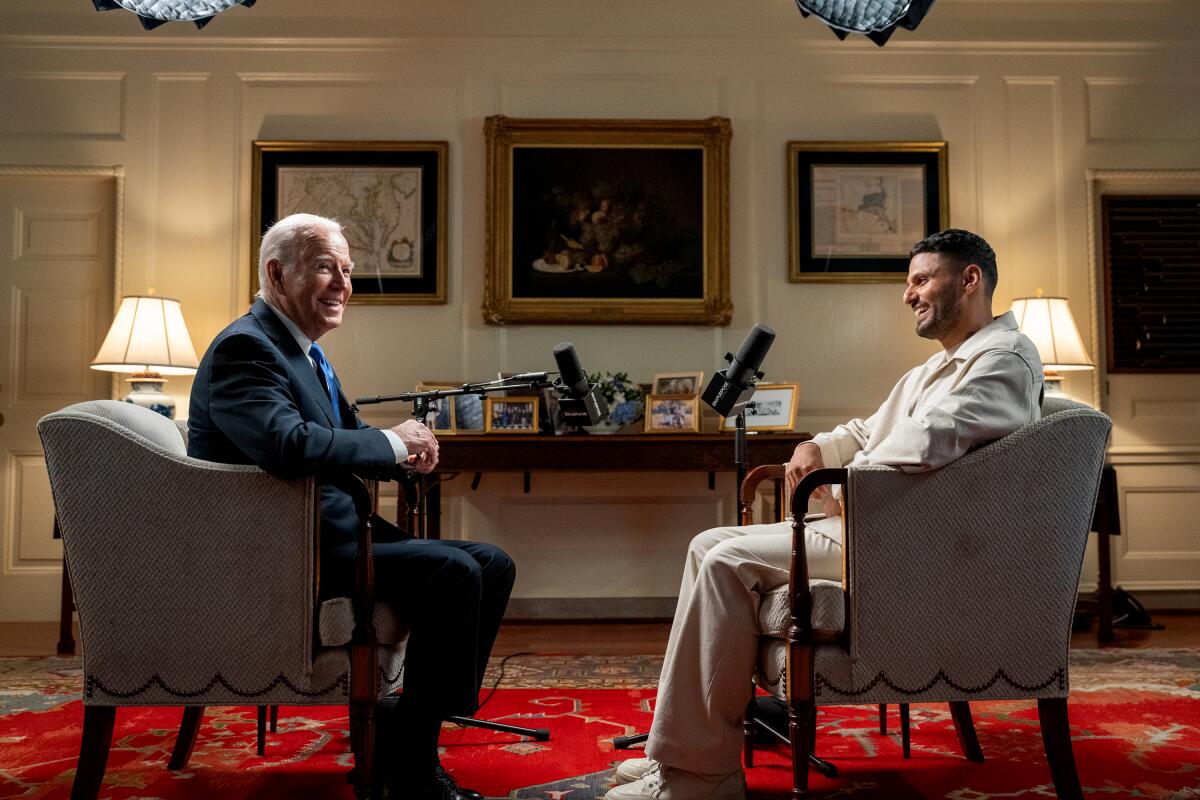
Tom Holland, top left, Kendall Jenner and President Biden have all been recent guests on Jay Shetty’s podcast. (Raj Hiran / Homer Salinas / White House)
A few weeks later, President Biden invited Shetty to the White House to record an interview with him — making “On Purpose” the only podcast the head of state has ever done besides “SmartLess.”
So why is everyone so obsessed with Jay Shetty?
My journey to find the answer began on that sleepless night when I opened the Calm app and selected Shetty’s 32-minute “Gratitude Body Scan for Sleep.” He is a major presence on the relaxation app, serving up bite-size pieces of wisdom via the Daily Jay, which promises it will take just “7 minutes every day to create your best self.”
That night, however, I wasn’t interested in learning about “The Benefits of Boredom” or “The Obstacle Course of Life.” I just wanted to drift off into a peaceful land free of my dog’s snoring. Immediately.
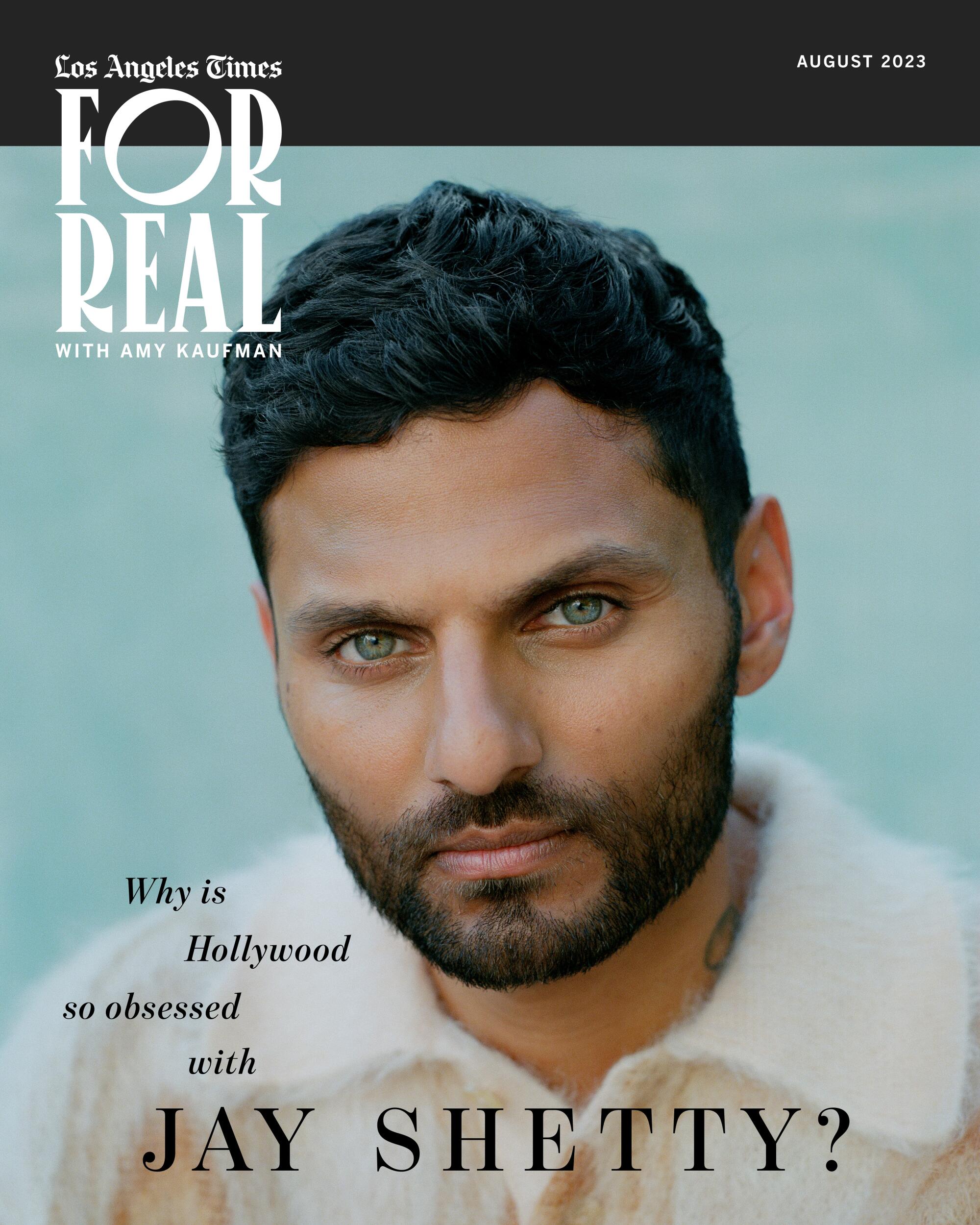
As the session began, Shetty reminded me how much my body does for me throughout the day. He urged me to slow down and give thanks for it.
“Feeling gratitude for the gift of this entire pulsing, beating, one-of-a-kind body,” he said. “Impossibly puzzled together to create you: a perfect tangle of humanity. Beautiful, peaceful, lovely and loved — just as you are.”
Shetty’s voice, as you might expect from a meditation expert, is extremely pacifying. Raised in North London, he has a British accent that is non-posh and very beguiling. His tone is soft and ethereal, his pace unhurried. I’m opening the door for you, it suggests, but I won’t push you through it.
Which is probably why it actually led me to sleep. Though the message Shetty was promoting about appreciating my overworked body was lovely, it was far from original. But he projected it with a lack of judgment that, somehow, made me feel a bit more tolerant of my nightly inability to just let go.
I’m not a big fan of the self-help industry. I find it difficult to believe that any individual knows the “best” way to live. I’ve never purchased a book by any Oprah- endorsed authors — Phil McGraw, Marianne Williamson, Eckhart Tolle. I don’t find Glennon Doyle’s podcast particularly inspiring. (I know, please don’t make me move out of Los Angeles.) I haven’t even watched Brené Brown’s famous TEDx talk.
What I have seen are the countless documentaries exposing the damage some supposed thought leaders — Bikram Choudhury, Keith Raniere, Gwen Shamblin Lara — have done to their followers. Too often, it seems, when someone seeks, and begins to accrue, followers, their power and ego grow so large that ethical boundaries get blurred if not outright ignored.
But Jay Shetty just seems so damn nice. On his podcast, he’s an active listener who reaffirms even the most prosaic of insights from his guests with sincere appreciation: “That’s so beautiful.” “I love that you asked that.” “That’s a phenomenal answer.” When we first meet, he’s sitting inside a sound booth at a Hollywood recording studio whose decor appears to have been inspired by the mainstream vision of Mexico — wedding blankets, skeleton sculptures, folk art masks. He has only socks on his feet and is cupping a mug of Throat Coat tea as he reads upcoming Daily Jay sessions into the microphone.
In one, he uses hiking as a metaphor. Many athletes dream of climbing the Seven Summits — the highest peak on each continent, Shetty says. But it’s the second-highest mountains on each continent that are actually the most technically difficult to ascend.
“In our culture, where it’s common to share our pursuits and triumphs with others — especially on social media — we can feel pressure to perform. Which ends up being, well, performative,” Shetty reads.
Ben Teitelbaum, a senior editorial producer at Calm who collaborates with Shetty on his content for the app, offers a suggestion from the soundboard.
“Just wanted to spitball if we wanted to say ‘feel pressure to go big,’ ‘to show out,’ ‘to impress’ — or do we like ‘to perform’?”
“I like ‘pressure to perform,’” Shetty replies.
“OK, perfect. Let’s do a pickup on the paragraph after that,” Teitelbaum says. He continues to give Shetty small notes: Go for a more supportive tone, take a swig of water, put the emphasis on a different word.
“Great feedback,” Shetty says, after a monotonous two hours have passed. “Great, great notes. Thank you for that. Good direction!”
Each month, Shetty spends one week recording content for Calm. Last year, he was named the company’s chief purpose officer, which means he leads webinars and conversations for Calm’s business partners. He devotes an additional five days to making his podcast, which releases two episodes a week — one an interview with a guest, the other offering guidance on topics like discipline, codependency and body image.
Another week sees him on the road, doing lucrative corporate speaking gigs for companies such as Microsoft and IBM about how to find purpose in the workplace. The rest of his time is occupied by meetings with his team — he has about 50 employees worldwide — talking about all his other businesses.
There’s the Jay Shetty Certification School, which has enrolled more than 3,500 prospective life coaches since its inception in March 2020. For $6,800, students receive 120 hours of instruction — more often from Shetty’s certified coaches than the man himself — with the aim to leave able to launch their own coaching careers. He also has the Genius App, a self-care tool on which, for $39 a month, users have access to virtual workshops and meditations taught by Shetty.
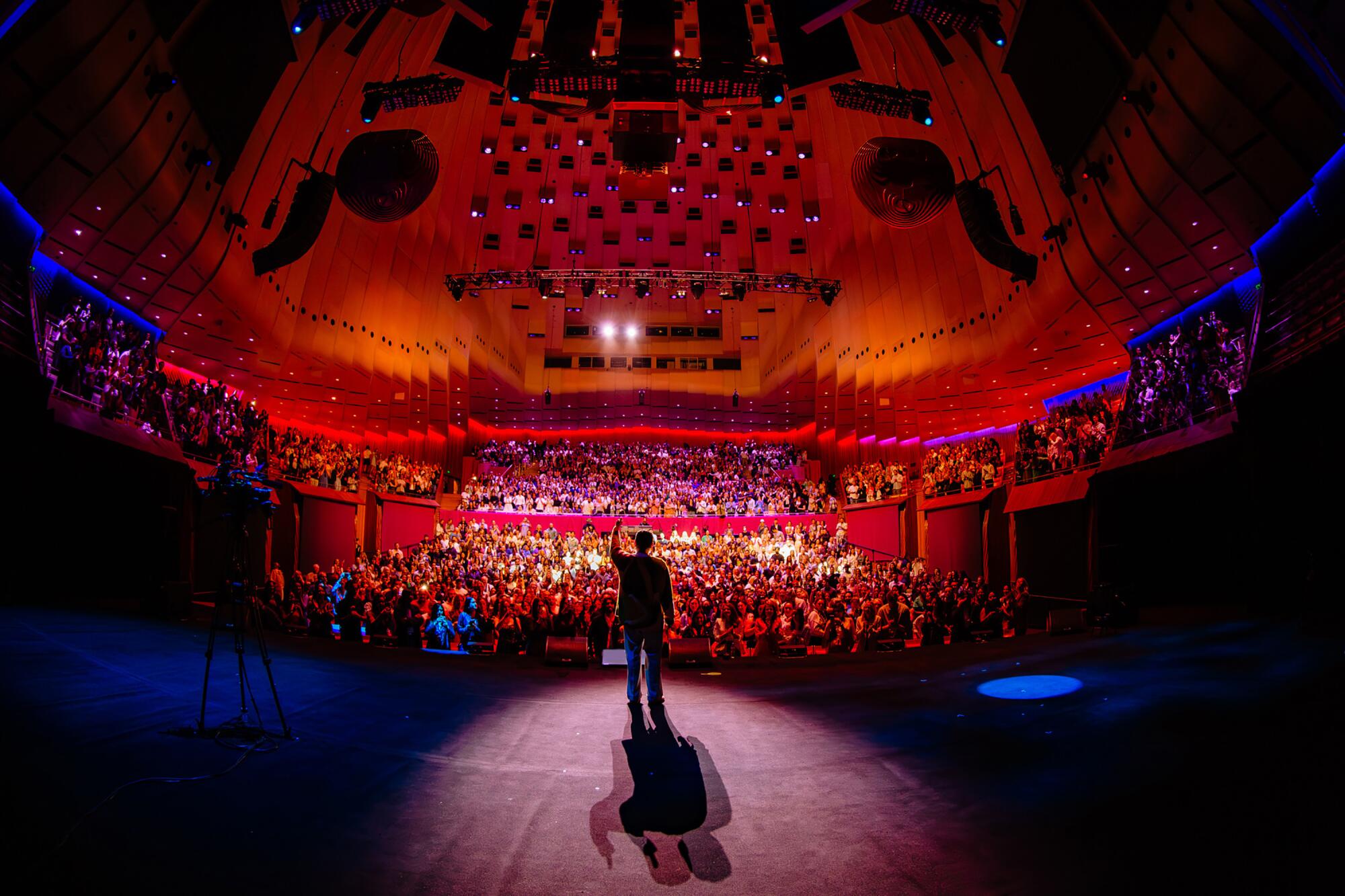
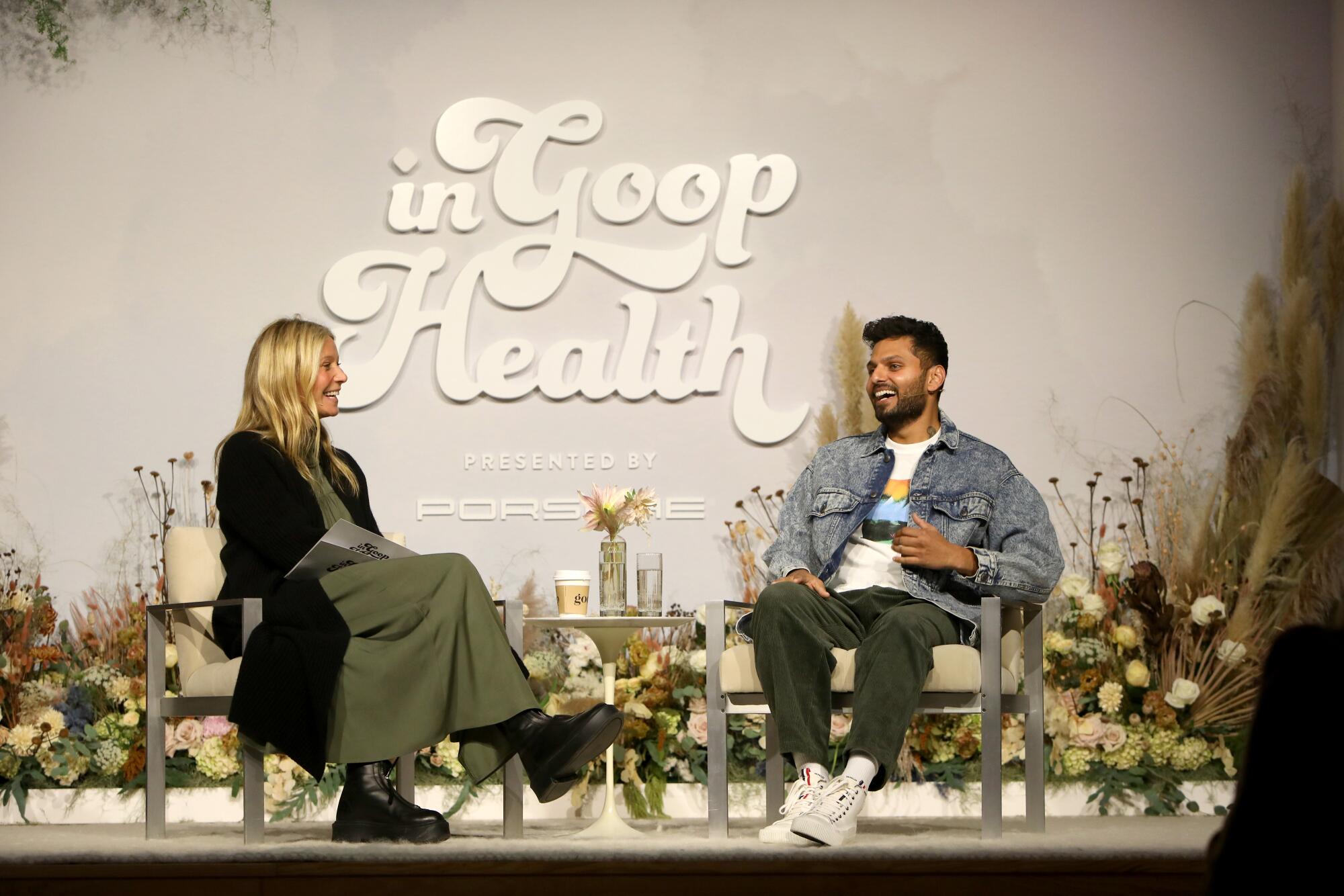
Earlier this year, he co-founded his own talent agency, House of 1212, which is — according to its website, anyway — “the home for humans who move the world’s conversations.” He and his wife, vegan chef Radhi Devlukia, recently launched Juni, a line of sparkling tea made with “powerful adaptogens and nootropics” that I learned about because I saw a huge display in a fridge next to the checkout line at Erewhon.
He is also mulling over his third book. His first, 2020’s “Think Like a Monk,” was a massive hit — a No. 1 New York Times bestseller that spent 16 weeks on the list and has since sold 2.7 million copies worldwide, Shetty’s team says. He followed that up with January’s “8 Rules of Love,” which has sold about 570,000 copies and sent him on a 32-date world promotional tour that took him from New York’s Beacon Theatre to the Sydney Opera House.
All of this has made Shetty very rich. In 2021, he and Devlukia bought an $8.4-million, 6,000-square-foot home perched at the top of the Hollywood Hills from Balthazar Getty. He records his podcast from a studio he built in a guest house on the property, where walls of pocket doors open to views of the twinkling L.A. skyline.
It is difficult to believe that the man who lives in this kind of home — all stark modern aesthetic, with lots of marble, 90-degree angles — is a spiritual leader who, by his own account, willingly slept on the floor of an ashram in India a decade ago.
“I’m well aware that my life is a paradox,” he says. “It’s a lot for me to comprehend, let alone someone who’s not me. So I get it. But I’m as much a media personality as I am a management consultant as I am a monk. Everything I have in my life — whether it’s personal satisfaction or career success — is based on me allowing all of those things to coexist.”
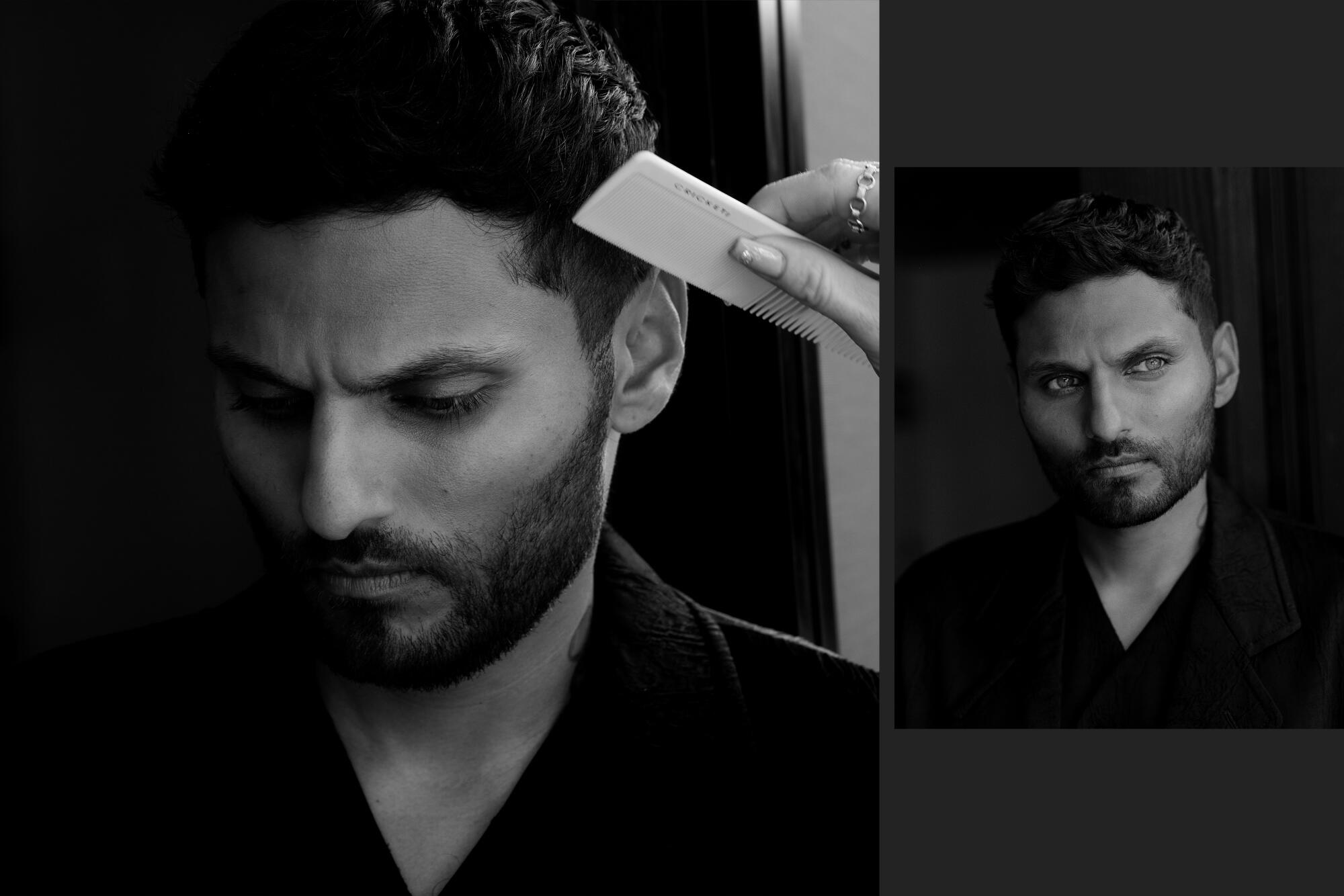
It’s the day after the Calm recording, and Shetty is in another very expensive home in Encino, which is owned by his friend, Payal Kadakia. She’s the CEO of ClassPass — the app that allows users to take fitness classes at various places instead of just one gym.
Shetty did not grow up in poverty, but his terraced house in suburban London looked nothing like his modernist aerie or this Cape Cod-style mansion. His parents met through an arranged marriage in India and later moved to the United Kingdom, where Shetty’s father worked as an accountant and his mother was a financial advisor. He and his sister, Amy, were purposely given Western-sounding names because Shetty’s mother had been teased for her own when she arrived in the U.K.
Still, Shetty was one of the only Indians at his elementary school, where he says he was bullied for the color of his skin.
During his teenage years, he went through a mild rebellious phase — experimenting with substances, getting in some fights. He started listening to rap music, writing his own rhymes; at 16, he got a tattoo on his neck of a fist holding a microphone. But by the time he graduated high school, he had matured — and abandoned his closely held ambition to pursue a career in graphic design.
“I think when you grow up in an Indian immigrant family, your parents are constantly reminding you of how hard they worked to be there,” Shetty recalls. “Life’s about working hard and doing well in school, and that has kind of always stayed as the compass.”
So he enrolled in the business school at the City, University of London, majoring in management science. His plan was to get a steady job and spend his life living just a few miles from his family.
It would only be a few weeks before his vision shifted again. As his oft-repeated story goes, a friend dragged Shetty to a talk being given by a monk, Gauranga Das. To his surprise, Shetty found himself transfixed. Dressed in his robes and speaking with a thick Indian accent, the monk appeared at ease in a room full of young Brits. He told the students that the greatest thing they could do with their lives was to use their skills in the service of others. It was a message that ran counter to everything Shetty had been taught — get a good degree, secure a well-paying job — be in service of yourself, essentially.
After the talk, Shetty approached Gauranga Das, who invited him to attend some other talks he was giving in the U.K. that week. Shetty began using his holiday breaks and summer vacations to travel to India to live with Gauranga Das in an ashram. He continued working toward his degree, securing internships at companies like Ernst & Young, but when graduation came, he felt his path was clear. “Do I want to work in the corporate world, or do I want to have a meaningful life of service and working on myself? It was a no-brainer.”
The news that Shetty was moving to India to become a monk was not greeted with enthusiasm. His friends feared he’d been brainwashed. His family thought he was wasting his education. Even Gauranga Das himself had some doubts.
“I was pretty shocked, because I thought that he was so good-looking and handsome and [had] spent his life in London. I tried to gently warn him about the pros and cons of the decision he was taking,” Gauranga Das writes in an email. “I thought he [would] be convinced by my words and opt out of the idea of monkhood, but to my utter surprise he was totally determined.”
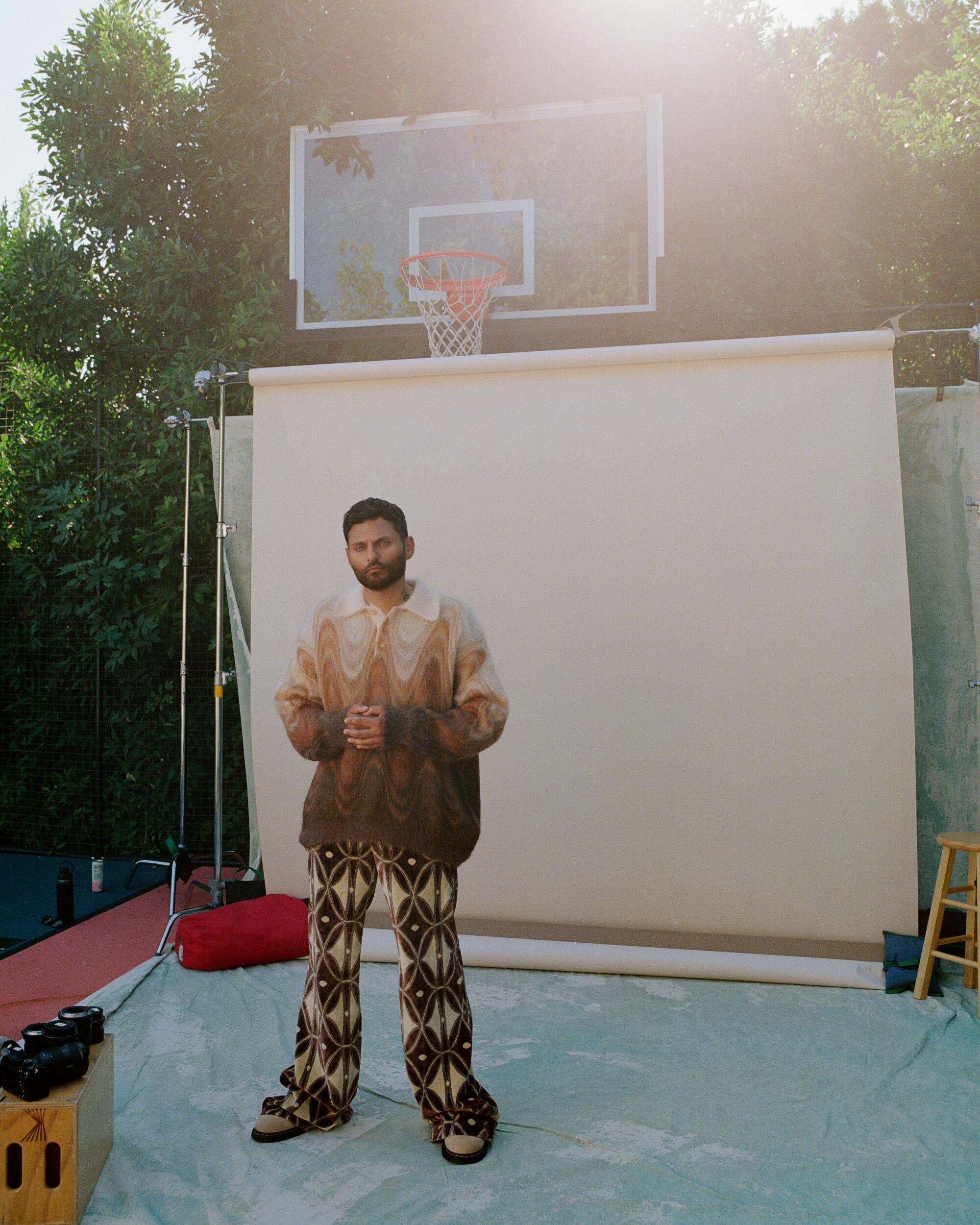
In 2010, at age 22, Shetty traveled to India, shaved his head and gave up all of his earthly possessions. In each of the two monasteries where he lived — Govardhan EcoVillage and Radha Gopinath ashram — he slept on a mat in an empty room with 10-12 other men. He had a gym locker where he kept this mat, a pop-up mosquito net, a blanket, two robes and a shawl. Each morning, he awoke at 4 a.m., spent four hours meditating, and then the rest of the day in classes on ancient literature or working the chore rotation. Sometimes, he and the other monks would travel to serve and prepare meals for the underprivileged or homeless.
In 2012, Shetty accompanied Gauranga Das on a 15-day multi-city American tour speaking tour during which, Gauranga Das says, he became “increasingly confident” that Shetty would “spend a longer time as monk than I had imagined.”
But the following year, his third in the ashram, Shetty started getting sick. He was pushing himself to complete longer periods of fasting or silent meditation. He wound up in the hospital, exhausted, his immune system shot. He realized he couldn’t hack it.
“I deeply realized that I wasn’t meant to be a monk. Monk life is very disciplined because you’re following a sacred practice that’s the same for everyone, and I had my own way,” he says, his light eyes never breaking contact with mine over the course of a 2½-hour conversation. “But I felt really embarrassed. I was like, ‘Oh, crap, everyone was right. I wasn’t good enough.’ I was carrying around a lot of guilt and shame.”
At first, Gauranga Das was surprised — but eventually he encouraged Shetty to find his own path forward.
“I must be honest that I was deeply affected by his decision to leave at that point, since I felt that he was doing great as a monk ... But I did not allow these thoughts to hamper his enthusiasm to move on,” acknowledges Gauranga Das, adding that Shetty continues to return to the ashram for a yearly pilgrimage . “The practices of our tradition are not very easy to practice, even in a monastic context. But I am elated to see Jay maturely fulfilling his duties and responsibilities as a family man, being part of a regular society while balancing his personal spiritual practices.”
Shetty says his time in India taught him to separate his identity from his passing emotions. And that’s what he realized he could convey to others: The mind can be navigated with the right tools.
Back in London, he struggled to put this idea into practice. He landed a job in digital strategy at Accenture, helping the company’s executives develop their social media presence. He also offered meditation sessions to small groups at the company, and led tiny monthly mindfulness events in the city that usually attracted no more than 10 people.
A friend suggested he’d attract more of an audience if he posted his lessons on YouTube. After he did, Accenture’s human resources director shared them with Arianna Huffington, who offered him a hosting gig at the Huffington Post.
In 2016, he moved to New York and began interviewing authors on a Facebook Live show called #FollowTheReader. The gig lasted only six months; Shetty decided to leave the company shortly after Huffington departed for her new venture, Thrive. Even so, Huffington’s endorsement carried weight; by the time he moved to L.A. in 2018, Shetty had established enough of an online presence that he felt comfortable networking at Facebook and YouTube creator events.
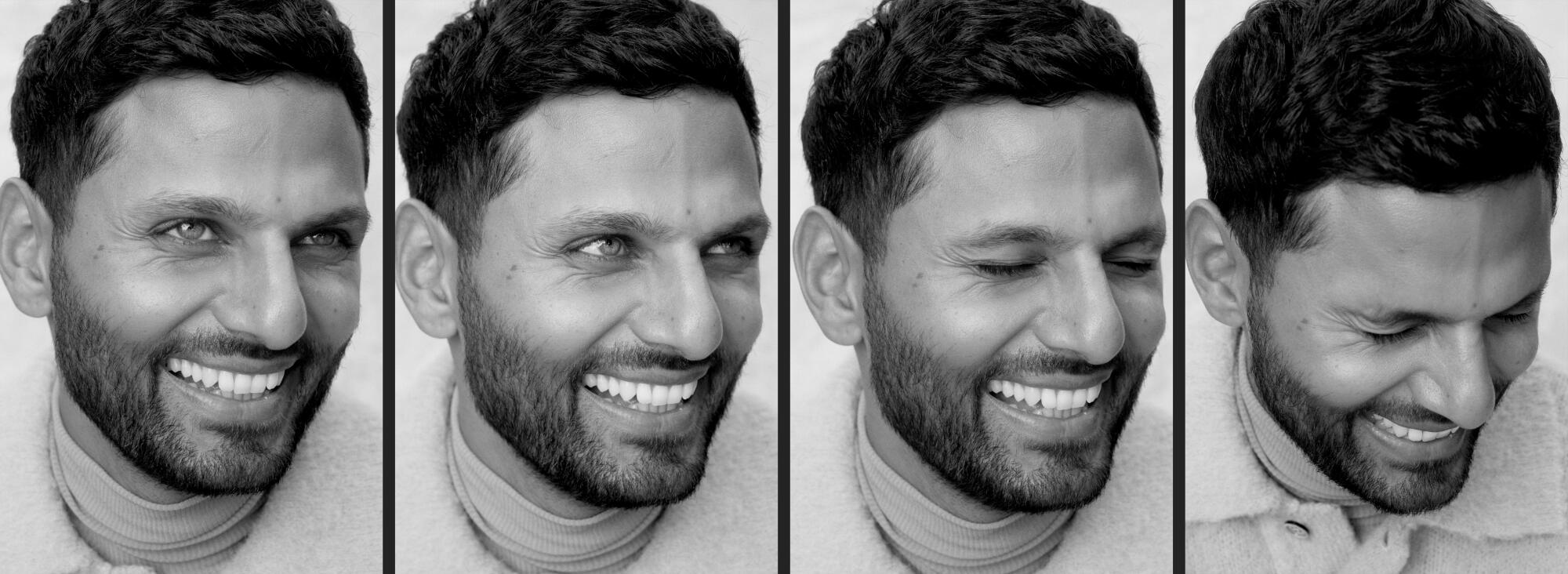
When he launched his podcast “On Purpose” a year later, he used personal connections and targeted online persuasion to land recognizable guests. His second interview was with Russell Brand, whom he’d met in the U.K. when the two were both disciples of the spiritual teacher Radhanath Swami. Shetty booked another early guest, Novak Djokovic, after noticing the tennis star followed him on Instagram and sending him a direct message.
“I have no shame in reaching out to someone who I believe would be interesting or that I’m curious about,” says Shetty, who recently booked Kendall Jenner for “On Purpose” after sliding into her DMs. That’s also how he struck up a relationship with Shawn Mendes.
In 2019, the musician came across a video of Shetty’s that he found inspirational. As he was about to send him an inquiry about working together, Mendes discovered a message history with Shetty; the former monk had reached out to him years prior.
“In my mind — and I’m embellishing here — it was like the DM said, ‘I am ready when you are,’” Mendes remembers. “I just had this feeling of meant-to-be-ness, like he knew. I am constantly going through these waves of ‘I’m sure of who I am, I’m sure of what I’m doing’ and then ‘I have no idea who I am, I have no idea what I’m doing.’ And I just got this feeling that Jay had this very grounded energy to him — that he wasn’t making things up. What he was talking about felt attainable.”
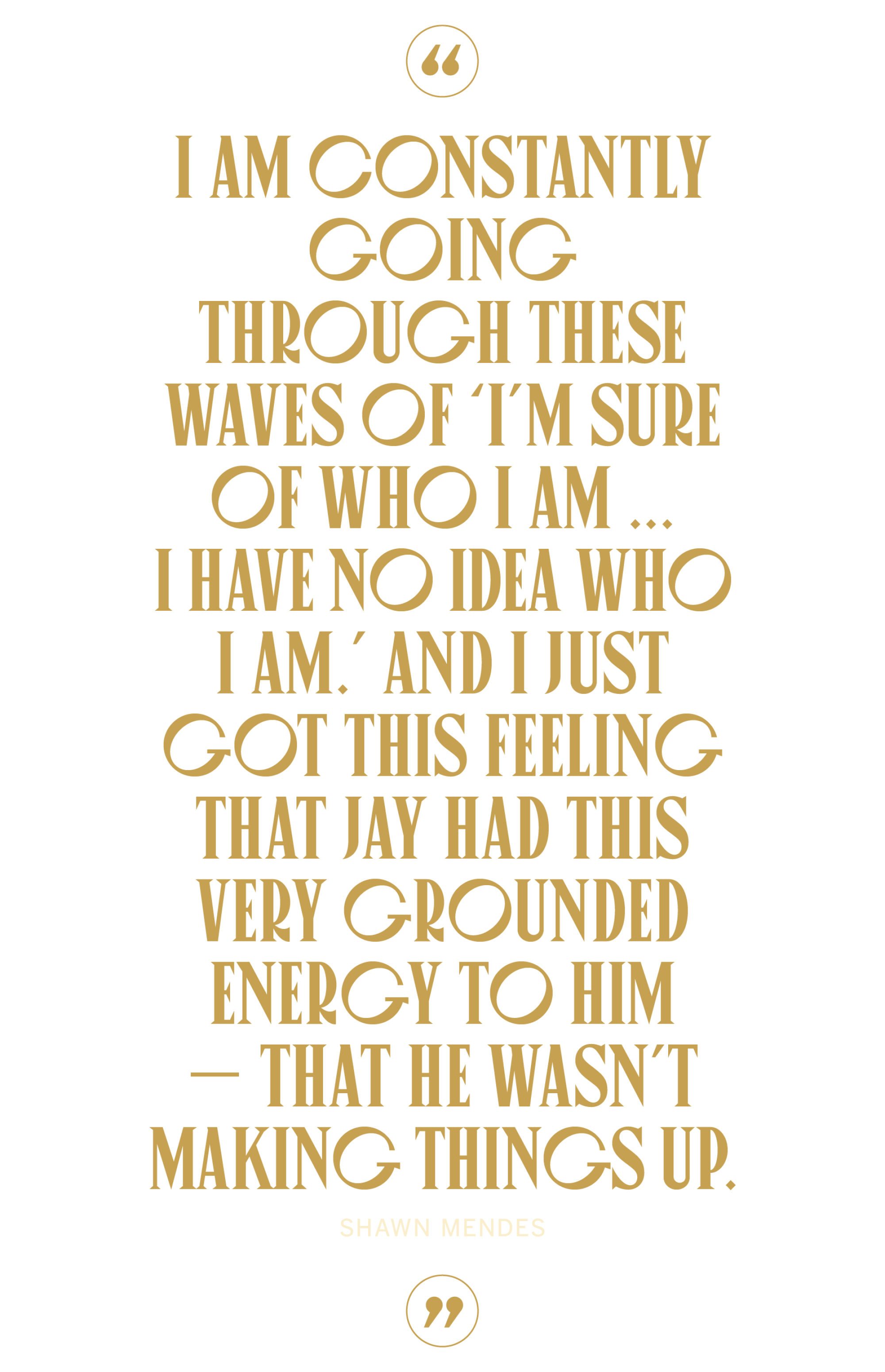
The accessibility of Shetty’s work has also led to some of its most vocal criticism. Shetty is open about the fact that he pulls his teachings from ancient Hindu scriptures like the Bhagavad Gita and uses them in a modern context; one of his catchphrases is “making wisdom go viral.” But this has led to detractors who accuse him of, at best, oversimplification, or at worst, spiritual plagiarism.
“My goal is to connect ancient wisdom with modern science and practical application, and in my eyes, that’s what’s unique about my approach,” Shetty says. “There will be people who say, ‘Jay, it’s too basic. You oversimplify it.’ But I’m OK with that because that’s what I need. I would rather be considered what I am today than to try to sound smart.”
For Mendes, who considers Shetty a mentor, the fact that his lessons are pulled from historical texts offers a sense of reassurance.
“There have been many times where we’re talking and I share a discovery I’m having and he’ll say, ‘Exactly, let me read you this line from a 10,000-year-old scripture in India,’” says Mendes. “And it would be almost identical, which was reaffirming. Jay just happens to be an incredibly talented, charismatic, warm instrument for that knowledge to pass through.”
But why has Shetty been able to specifically connect with so many celebrities?
Mendes cites Shetty’s emphasis on discretion. Jenner, a model, echoes his sentiments: “It’s really easy to tell that he’s a safe space.” And Jennifer Lopez and Lily Collins — who each chose Shetty to lead their respective wedding ceremonies — wax rhapsodic about him over email. Lopez calls him “a guiding light for so many of us” whose insights allow “us to tap in to who we are and to live in the NOW”; Collins says he made “time stand still during the most beautiful day” of her life.
Celebrities, of course, tend to hire and celebrate those endorsed and celebrated by their peers. Just ask Gwyneth Paltrow — who featured Shetty at her In Goop Health conference a couple of years ago. It also doesn’t hurt that Shetty’s aura is so nonthreatening. Stars talk to Alex Cooper on “Call Her Daddy” if they want to show how unfiltered they can be about sex, money, fame. With Shetty, they know they won’t be forced to expose their personal lives — his podcast prizes discussions about mental health over gossip, allowing them to appear open while still retaining privacy.
In other words, a publicist’s dream date.
A $60-million Spotify deal made her the highest-paid female podcast host on the planet, now ‘Call Her Daddy’s’ Alexandra Cooper is fathering a generation.
But Shetty himself does not seem particularly interested in investigating his allure to highly successful people. He brushes off the question, pointing to the non-famous who connect with him via his tour or his books or Calm. He talks about luck, good timing.
“I don’t need anything from anyone,” he says after some pressing. “I’m quite comfortable in my own skin. And I’m also happy to tell someone I’m a huge fan or not, and not worry about how it’s perceived. And I think that that can be easier to be around.”
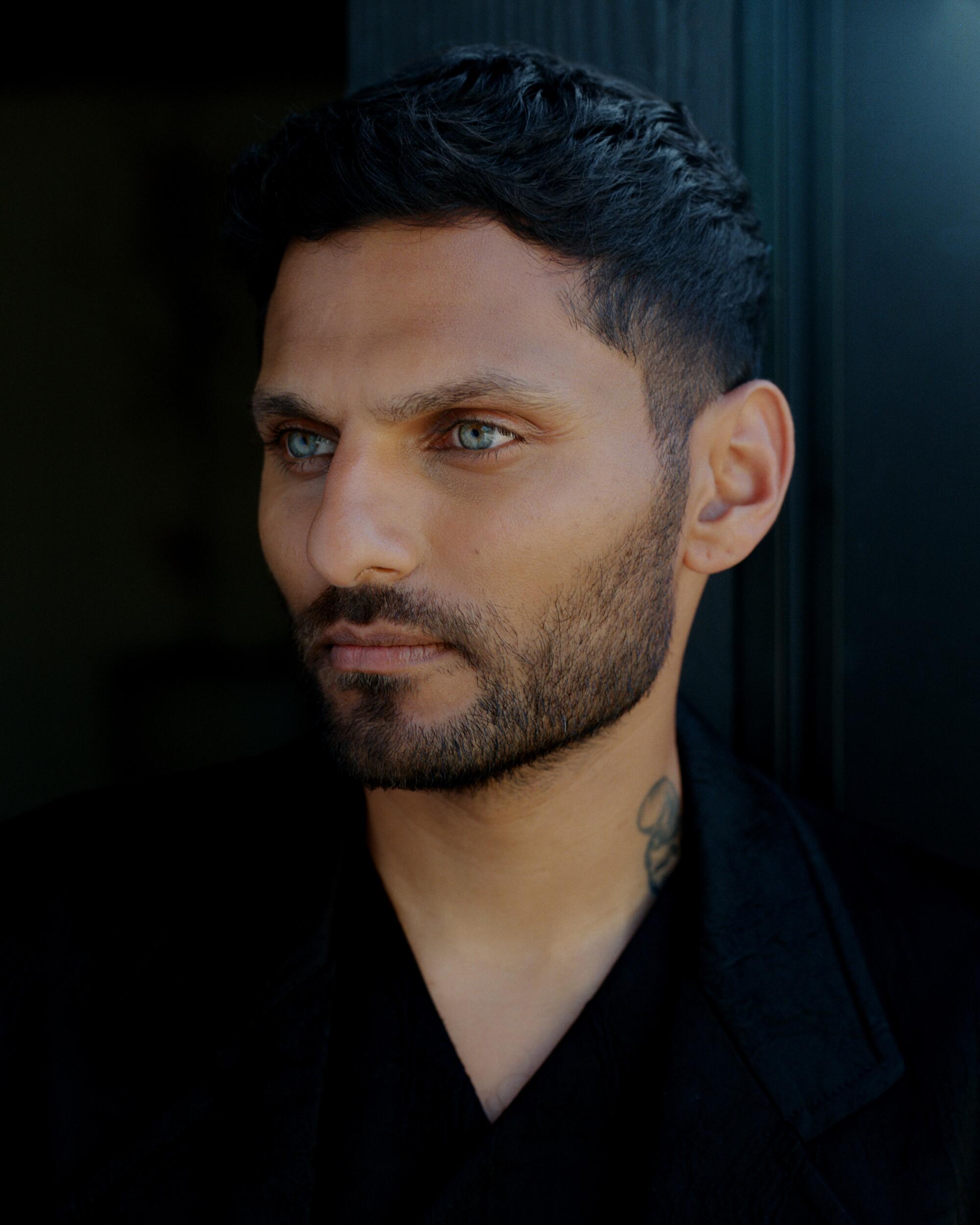
But self-help guru to the stars? It’s not a title he’ll ever embrace.
“That’s a title I’ve never given myself — one I never wanted and don’t align with at all,” he says, betraying the only flash of annoyance I’ll witness during my time with him. “A guru is a really sacred term in the East. It’s considered someone who’s kind of, like, fathered you spiritually. So I don’t like that — I think [the word] should be given the importance that it deserves.”
I broach my skepticism of the self-help industry, which generates billions of dollars by propagating the notion that whatever ails you can be cured with the help of a bestselling author, motivational speaker or podcaster. I like that Shetty doesn’t approach his work from a holier-than-thou perspective — his general vibe seems to be, This is what worked for me, and if you want to try it, cool. But the instructive nature of some of his lessons — particularly the emphasis on numbers: “8 rules,” “6 ways,” “3 lessons” — seems reductive.
First, he says, it’s important to differentiate the work he does as a mentor versus a coach. As a coach, he isn’t trying to lead by example — he wants to help someone to achieve their individual goals. He encourages his coaching clients to work with a therapist simultaneously, because he believes therapy helps us to make sense of our past, while coaching helps us build our future.
Shetty never takes on more than six clients in one year. He charges them a high hourly rate, but says the entire fee goes to the charity of their choice. (He won’t give any names, citing privacy concerns.) “I’ve always wanted to live in service, and I don’t think a reminder to give is what people need — I think people need an actual commitment,” he explains.
In his broader work, however — his books, his podcasts — Shetty is offering guidance based off his own experiences. He insists that his intention is not to suggest that his methods are the best or the only, and that he often packages his advice in numerical form simply because he thinks humans are more adept at consuming structured information. If there are eight rules and just one resonates with someone, that’s fine by him.
“I want to make things digestible, accessible, relevant and practical for people so that they can actually change their lives,” he says.
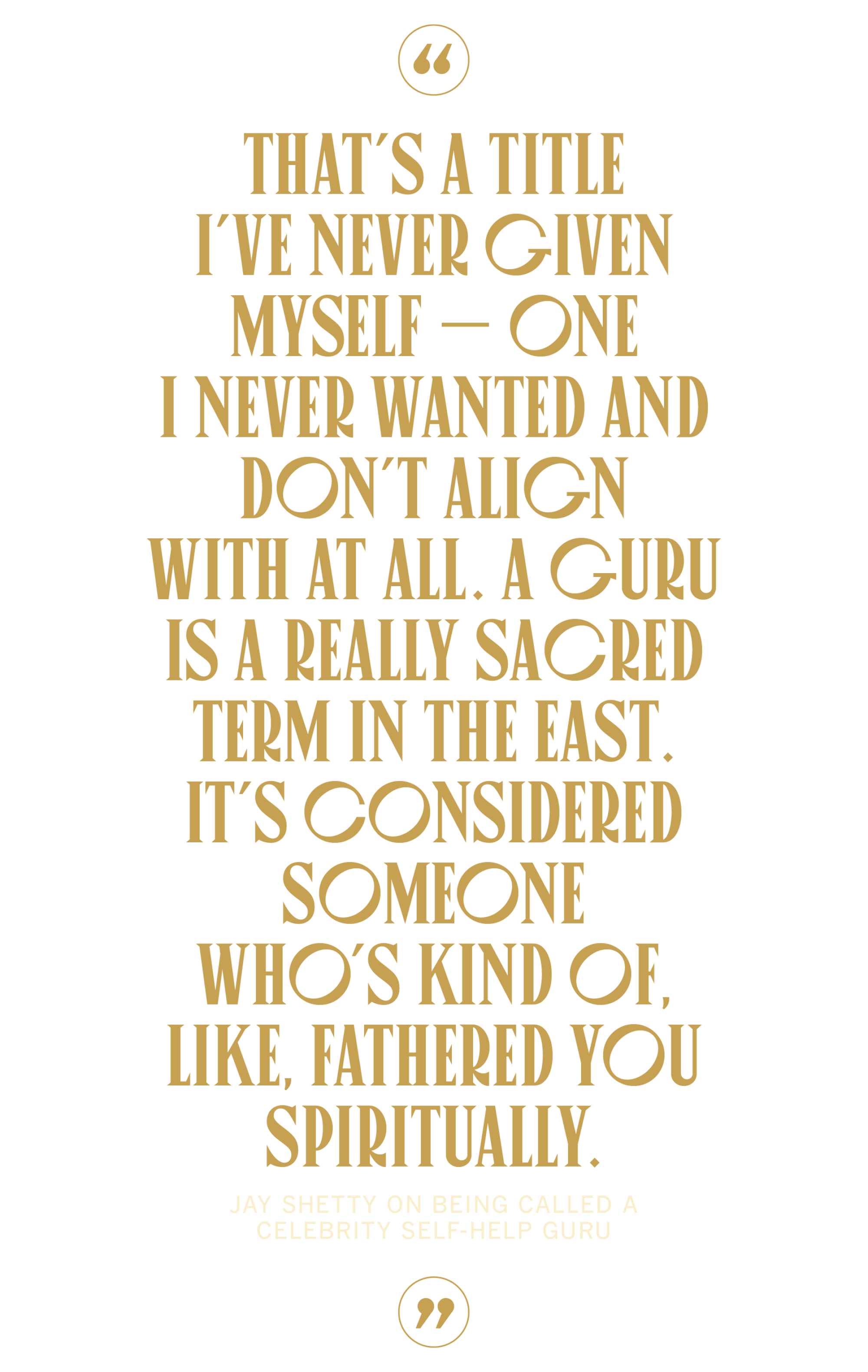
Part of that messaging means acknowledging his own struggles. In his interview with Holland, for instance, after the actor revealed his drinking history, Shetty was quick to share how insecure he felt in social situations after he quit drinking himself. When Biden spoke about being teased for his stutter as a kid, Shetty related that, as a boy, he’d been bullied for his weight and the color of his skin. Greg Justice, Calm’s chief content officer, says that’s something that the app’s users have responded to in Shetty.
“In a lot of his content, he speaks to his own challenges and failures,” says Justice, noting that 80% of Daily Jay consumers are repeat listeners. “The prototypical self-help guru kind of represents themselves as coming down from on high and preserving this image of perfection. Jay is very raw and vulnerable himself, and I think that’s just more relatable.”
Although Shetty has referred to himself as a “former monk” since leaving the ashram a decade ago, those years remain crucial in his marketing. He says he still retains many of the tenets he learned in India. He leads a relatively disciplined life: Wakes up and goes to sleep at the same time, keeps a routine workout schedule, meditates for at least 90 minutes a day.
At 48, Drew Barrymore has survived divorce, quitting alcohol and leaving her beloved Los Angeles. Now she’s trying to embrace herself as she forges ahead in a new direction — talk show host.
The mat on the floor is a thing of the past — he now sleeps on a DreamCloud mattress, a fact he mentions during an advertisement featured on many episodes of “On Purpose.” But he claims he spends his newfound wealth largely on experiences: taking his family on vacations, investing in coaches and trainers to help keep him healthy. He’s never said he’s against making money — he just wants people to investigate the reasons behind their material desires, lest they end up wealthy and unhappy.
“When I left being a monk, I was like, ‘God, I just wasted three years,’ but it wasn’t a waste of time. It was so useful,” he says. “I get to teach, and that’s what’s helping people today — millions of people around the world. Every experience you have can be valuable in the future if you allow it to be. I have to allow myself to be the complex version of who I am, even if it doesn’t make sense to anyone. Because it makes sense to me.”
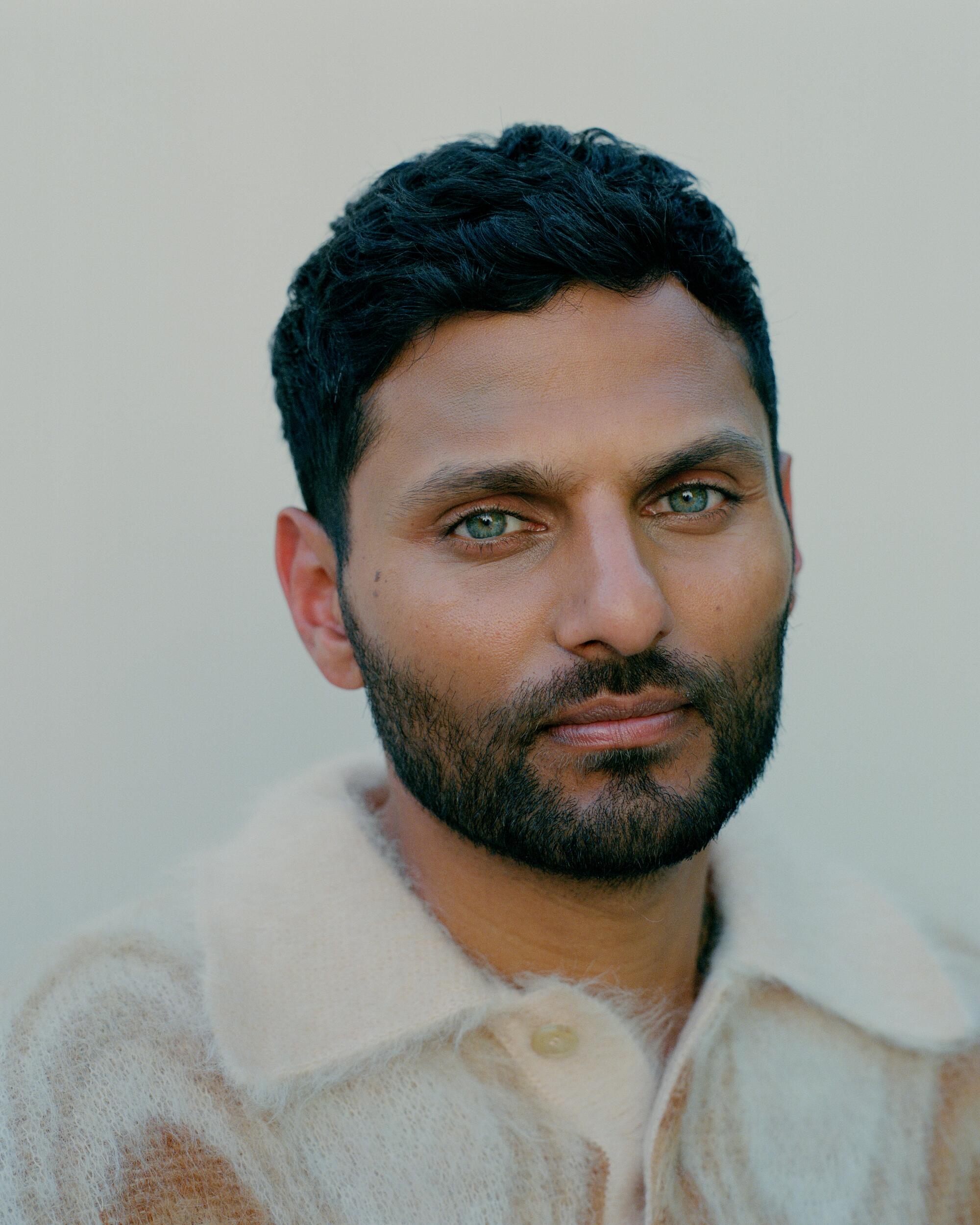
I wanted to speak with Shetty because I wanted to understand why so many people have fallen under his spell. In the process, I began to question if perhaps my curiosity rose from the same root as his fans’ adoration: Because he seems happy, and I want to be that happy. As we spoke, a small part of me wondered what it would be like to be one of Shetty’s special six private clients. Could he help me fall asleep more consistently? Ease my panic attacks?
There’s a reason every generation has produced its version of Shetty — spiritual figures acting outside the confines of organized religion whose goal is to bring humanity to some kind of larger truth. Yes, the game is rigged — there’s a network of powerful anointers, and greed too often taints even the best of intentions. And yet so many of us continue to seek structure, connection, clarity.
If that’s what Shetty is able to give certain people, then who I am to disparage it? He is meeting a need as ancient as the Bhagavad Gita. I still may not be interested in thinking like a monk, but if it helps me fall asleep, I have no problem meditating with one.
More to Read
The biggest entertainment stories
Get our big stories about Hollywood, film, television, music, arts, culture and more right in your inbox as soon as they publish.
You may occasionally receive promotional content from the Los Angeles Times.




